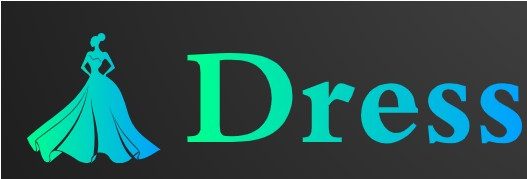In today’s competitive work environment, knowing how to dress for office work female is not just about following a dress code—it’s about expressing confidence, professionalism, and personal style. Whether you’re stepping into a corporate boardroom, a creative agency, or a hybrid work setup, dressing appropriately can significantly influence how you’re perceived by colleagues and supervisors alike.
This in-depth guide will walk you through everything you need to know to master your office wardrobe, from decoding dress codes to outfit formulas, seasonal considerations, and money-saving style tips.
Understanding Office Dress Codes for Women

Before curating your office wardrobe, it’s essential to understand the type of dress code your workplace follows. Female office attire typically falls under one of the following categories:
1. Business Formal
Business formal is the most conservative dress code, often found in industries like law, banking, and government.
- Examples: Tailored pantsuits, structured blazers, sheath dresses, pencil skirts, silk blouses, low-heeled pumps.
- Colors: Neutral tones such as black, navy, grey, and beige.
- Fabric: High-quality materials like wool, cotton blends, and silk.
2. Business Professional
A notch down from formal, business professional allows slightly more flexibility while still being polished.
- Examples: Knee-length skirts, smart cardigans, printed blouses, subtle jewelry.
- Colors: Still neutral, but can include modest prints or soft pastels.
- Shoes: Closed-toe flats, loafers, or low-to-medium heels.
3. Business Casual
Business casual is the most common dress code in modern workplaces and combines professional elements with relaxed style.
- Examples: Ankle pants, midi skirts, knit tops, structured jackets, ballet flats.
- Permitted Items: Dark denim (in some offices), casual blouses, block-heeled boots.
- Avoid: Ripped jeans, graphic tees, tank tops, and flip-flops.
4. Casual/Creative Work Environment
Startups, media, and design agencies often embrace casual or creative dress codes, allowing more freedom.
- Examples: Trendy blazers with jeans, jumpsuits, statement accessories, bold prints.
- Rule: Even in casual settings, clothes should be clean, well-fitted, and non-revealing.
How to Build a Work Wardrobe That Works for You
If you’re wondering how to dress for office work female without getting overwhelmed, the key is to build a functional capsule wardrobe. This approach ensures you have versatile pieces that mix and match easily while keeping your style professional.
1. Invest in Quality Basics
Begin with timeless, high-quality basics you can rotate every week:
- Tailored trousers in black, navy, or grey.
- Blazers in neutral tones.
- Crisp button-down shirts or fitted blouses.
- Knee-length pencil skirts or A-line skirts.
- Cardigans for layering in colder environments.
2. Add Professional Dresses
Work-appropriate dresses are excellent for effortless dressing:
- Sheath dress: Form-fitting but not tight, ideal for formal offices.
- Wrap dress: Flattering on most body types, perfect for business casual.
- Shirt dress: Structured yet comfortable, great for creative offices.
Stick to modest necklines and hemlines that hit the knee or below.
3. Use Blazers to Elevate Outfits
Blazers are transformative—they instantly make any outfit look office-ready. Keep at least two well-fitted blazers:
- Classic single-breasted blazer for formal occasions.
- Soft knit or cropped blazer for business casual or creative looks.
Choose blazers in black, grey, or navy for versatility, and consider one in a seasonal color like olive or burgundy.
4. Pick Shoes That Are Stylish and Comfortable
For long office hours, comfort is key:
- Classic pumps with a 2–3 inch heel.
- Loafers or oxfords for more support.
- Ballet flats and mules for casual chic.
- Avoid sneakers unless explicitly permitted.
5. Choose the Right Accessories
Accessories can enhance your style without making you look unprofessional:
- Jewelry: Stick to minimalist pieces—stud earrings, a sleek watch, a pendant necklace.
- Belts: Use belts to accentuate your waist or add structure to loose pieces.
- Handbags: Structured totes or medium-sized shoulder bags work best.
Avoid noisy bangles, oversized statement pieces, or neon colors.
How to Dress for Office Work Female: Seasonal Styling Tips
Dressing for office work as a woman also involves adjusting your wardrobe to suit the season without compromising professionalism.
Spring Office Style
- Light trench coats or cardigans.
- Floral or pastel blouses paired with neutral skirts.
- Lightweight slacks and linen blazers.
- Closed-toe block heels or leather loafers.
Summer Office Style
- Breathable fabrics like cotton, rayon, or linen blends.
- Sleeveless blouses (if dress code permits) with high necklines.
- Skirt suits or culottes with tucked-in tops.
- Avoid sandals unless they are formal and minimal.
Fall Office Style
- Wool or tweed skirts and pants.
- Earth-tone blazers and long-sleeved blouses.
- Layering with cashmere sweaters and scarves.
- Heeled ankle boots or loafers.
Winter Office Style
- Tailored wool coats and trench coats.
- Turtlenecks under blazers or dresses.
- Sweater dresses with tights and boots.
- Gloves and a structured handbag to complete the look.
Style Tips by Body Type: Dress for Confidence
Understanding your body type can help you dress more confidently. Here’s how to dress for office work female, tailored to different shapes:
1. Pear-Shaped Body
- Accentuate your upper body with bright-colored blouses or statement necklaces.
- Opt for A-line skirts and wide-leg pants.
- Blazers that cinch at the waist flatter your figure.
2. Apple-Shaped Body
- Choose tops with empire waists and V-necks.
- Wear structured blazers to create definition.
- Flared skirts or straight-leg trousers balance your silhouette.
3. Hourglass Figure
- Emphasize the waist with fitted dresses and belted outfits.
- Avoid oversized layers that hide your curves.
- Opt for pencil skirts and tailored blouses.
4. Rectangle Shape
- Add curves with peplum tops and ruffled blouses.
- Layer with jackets that taper at the waist.
- Try wrap dresses to enhance your shape.
How to Dress for Office Work Female in a Hybrid or Remote Environment
With the rise of remote and hybrid work, many wonder what “office wear” means when working from home or part-time in-office.
Hybrid Work Tips
- Keep a rotation of comfortable but professional outfits ready for in-office days.
- Store a blazer or scarf in your office bag for quick polish.
- Stick to neutral tones and minimal patterns to simplify transitions.
Remote Work Style
- Choose tops with structure for virtual meetings—blouses, knit tops, or soft blazers.
- Avoid pajamas or overly casual tees.
- Comfortable bottoms like leggings are fine off-camera, but dress fully for increased productivity.
Mistakes to Avoid When Dressing for Office Work Female
Avoid these common mistakes to maintain a professional impression:
1. Too Revealing Clothes
- Avoid plunging necklines, backless tops, or mini skirts.
- Always test outfits in natural light to ensure they’re not see-through.
2. Unkempt Clothing
- Wrinkled shirts, pilling sweaters, or faded pants can ruin your look.
- Invest in a steamer or iron, and perform regular closet checks.
3. Over-Accessorizing
- Loud jewelry or overpowering fragrances can distract coworkers.
- Stick to the “less is more” rule—choose one focal accessory.
4. Ignoring Company Culture
- If your office is more conservative, avoid trendy or flashy pieces.
- Adapt to the culture while staying authentic to your style.
Budget-Friendly Tips: Look Great Without Spending a Fortune
Knowing how to dress for office work female doesn’t require a high-end budget. Here’s how to look polished without overspending:
1. Build Slowly
Start with basics and add trendier pieces seasonally. Avoid buying full wardrobes in one go.
2. Thrift and Outlet Shopping
Check local thrift stores or online platforms like Poshmark or ThredUp for gently used professional attire.
3. Focus on Versatile Pieces
A white blouse, black blazer, or navy slacks can be styled in 10+ ways. Prioritize items that go with multiple outfits.
4. Shop End-of-Season Sales
Buy classic pieces off-season to get quality at a discount.
Outfit Formulas to Try
Having ready-to-go outfit combinations can simplify your mornings. Here are some easy formulas:
Business Formal:
- Black sheath dress + grey blazer + nude heels
- White blouse + navy pantsuit + structured tote
Business Casual:
- Patterned blouse + ankle pants + loafers
- Midi skirt + knit sweater + pointed flats
Casual Office:
- Jumpsuit + cropped blazer + sandals
- Dark jeans + silk top + mules
Final Word on How to Dress for Office Work Female
Mastering the art of how to dress for office work female is about striking a balance between professionalism, comfort, and individuality. Whether you’re new to the workforce or updating your style after years, investing in timeless, versatile pieces while paying attention to your workplace culture will always serve you well.
Frequently Asked Questions (FAQs)
Q1: What should a woman wear on her first day at a new office job?
A: It’s best to err on the side of formality. Opt for a tailored blazer, a modest blouse, and either dress pants or a knee-length skirt. Neutral colors like black, navy, or beige create a professional impression. Once you understand the workplace culture, you can adjust accordingly.
Q2: Can women wear jeans to the office?
A: That depends on the office dress code. In business casual or casual environments, dark-wash, non-ripped jeans paired with a smart blouse and blazer are usually acceptable. Avoid overly distressed or tight-fitting jeans unless your workplace explicitly permits them.
Q3: Are sleeveless tops appropriate for office work?
A: Sleeveless tops are acceptable in many modern workplaces, especially in warmer seasons or climates. However, avoid spaghetti straps or low-cut necklines. When in doubt, layer with a cardigan or blazer to maintain professionalism.
Q4: How many outfits should I have for a weekly office wardrobe?
A: Ideally, aim for at least 5–7 interchangeable outfits that can be mixed and matched. A capsule wardrobe of blouses, blazers, skirts, pants, and a few dresses can create 15+ combinations to keep your looks fresh without overbuying.
Q5: What footwear is best for all-day comfort at the office?
A: Go for closed-toe flats, block heels, loafers, or low wedges. Look for styles with arch support, cushioned insoles, and breathable material. Steer clear of stilettos or unsupportive sandals for long hours.
Q6: How do I make my office outfit look more stylish?
A: Incorporate subtle prints, add a statement belt or necklace, or play with textures like silk, tweed, or lace trims. Even a brightly colored blazer or patterned scarf can elevate a neutral outfit without looking unprofessional.
Q7: What should I avoid wearing to an office job?
A: Avoid clothing that’s too tight, short, revealing, or casual. Say no to flip-flops, tank tops, distressed jeans, gym wear, or outfits with large logos. Anything distracting or overly trendy can send the wrong message in a professional setting.
Conclusion
Dressing appropriately for office work as a woman is not just about following rules—it’s about presenting your best self, feeling confident, and adapting your style to your professional environment. From understanding dress codes to building a wardrobe that balances comfort and style, learning how to dress for office work female is a valuable skill that evolves with your career.
By investing in quality basics, mixing in a few trend-forward pieces, and paying attention to fit and polish, you can navigate any workplace with style and confidence. Remember, your clothing speaks before you do—so let it say something powerful, poised, and professional.
If you’re just starting to refine your office wardrobe or looking to upgrade your daily looks, use this guide as a foundation. The right outfit can inspire productivity, build authority, and help you feel empowered—one polished look at a time.
